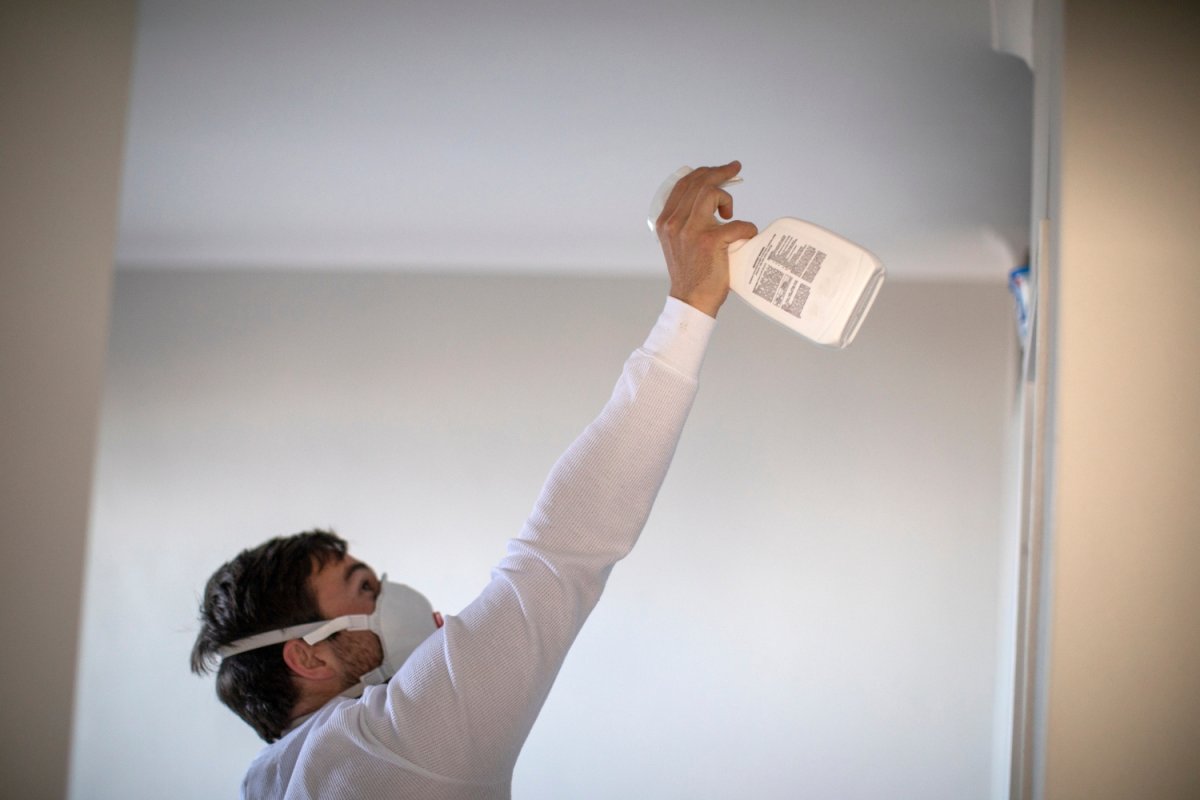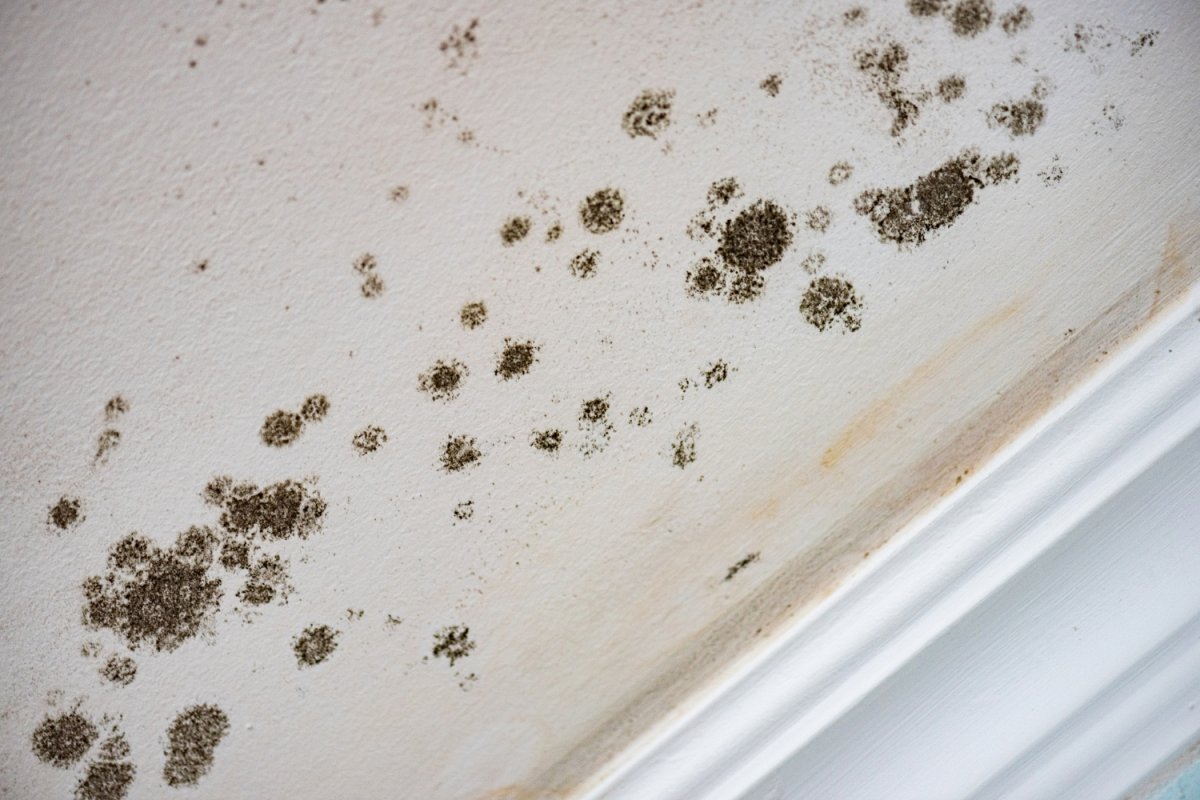We may earn revenue from the products available on this page and participate in affiliate programs. Learn More ›
What You Need to Know
- Home warranties typically don’t cover mold damage since this issue is often caused by a homeowner neglecting routine maintenance.
- A home warranty can cover home systems and appliances that may cause mold to grow, such as pipes, roofs, dishwashers, and washing machines.
- Homeowners insurance policies may provide mold coverage if the mold was caused by a covered peril.
Q: I recently discovered mold growing in my home and I’m not sure how to proceed. I have homeowners insurance and a home warranty and I’m hoping the home warranty will help me pay for mold removal services. So, does a home warranty cover mold remediation?
A: Mold infestations can wreak havoc on a home, causing property damage and even leading to potential health issues. For these reasons, it’s understandable that homeowners who discover mold are eager to have it removed.
But does a home warranty cover mold? Homeowners counting on using their home warranty to shoulder the burden of mold remediation may be surprised to learn that this type of damage is typically excluded from home warranty coverage. This is because mold infestations are often caused by issues that could have been prevented through routine maintenance, and these types of issues typically fall outside the scope of a home warranty policy. Find out how a home warranty can help, and whether your mold situation might be covered under your homeowners insurance.
Since mold is usually caused by an undetected leak or poor ventilation, it’s not typically covered by a home warranty.
A home warranty is a service contract designed to help pay for repairs and replacements of covered systems and appliances in a home. Typically, the warranty will cover a claim if the damage to the home system or appliance was caused by age or normal wear and tear. However, mold growth is often excluded from coverage. In many cases, mold is caused by undetected leaks, poor ventilation, and condensation buildup. These underlying causes, which are considered maintenance issues, are typically excluded from home warranty coverage since they could have been prevented through routine upkeep.
Because of this, it’s unlikely that homeowners will be able to use their home warranty to cover the cost of mold removal. However, they can always contact their home warranty company to confirm the terms of their policy. Though even the best home warranty companies (such as American Home Shield or AFC Home Club) may not cover mold damage, homeowners may be able to use their warranty to correct leaks and other issues that could cause mold in the future.

However, home warranties can be used to fix issues that have the potential of causing mold, such as a leaking appliance, a plumbing issue, or a roof leak.
Leaking appliances, plumbing failures, and roof leaks are just a few of the common household issues that can lead to the growth of mold. Although most home warranties will not cover mold once it grows, homeowners can leverage their home warranty policy to fix these types of issues before mold can begin to develop.
A home warranty provides both home system and appliance coverage and can help shield homeowners from expensive repairs and replacements. When a policyholder files a claim, they will be connected with qualified contractors and can schedule the necessary repairs while avoiding hefty out-of-pocket costs (with the exception of a service fee). Homeowner warranties are therefore a crucial component of any home protection plan, providing different benefits than homeowners insurance and potentially allowing homeowners to prevent mold damage in the first place.
If the mold was directly caused by a covered peril, such as a burst pipe, a homeowners insurance policy may provide coverage.
With the understanding that home warranties may not solve a household mold problem, does insurance cover mold removal? Although mold damage is not typically covered under a homeowners’ warranty, insurance may be a more viable option. Unlike a home warranty, insurance provides protection from perils such as fire, hail, and lightning, for example, and can also cover structural damage caused by natural disasters such as hurricanes, windstorms, and earthquakes. This means that depending on the root cause of the mold, homeowners may be able to leverage their homeowners insurance to handle their mold issues.
For example, if a major storm causes water damage or a cold front causes pipes to burst, mold damage related to these issues may be covered under the homeowner’s insurance policy, although it’s important to note that a deductible may apply. However, if the cause of the mold was flooding, standard homeowners insurance isn’t likely to apply, as flooding is typically excluded from coverage. To find out if their mold insurance claim will be accepted, homeowners will need to contact their insurance provider directly and ask, “Is mold covered by insurance?”

There are several steps homeowners can take to prevent mold from growing in the first place.
The best way for homeowners to avoid moldy situations is to stop mold from growing in the first place. The good news is there are several steps homeowners can take to create a less hospitable environment for mold spores. It’s important to remember that mold thrives in damp places, so taking swift action to fix roof leaks, plumbing failures, condensation buildup, and other water-related issues is the best way to stop mold in its tracks.
Experts suggest regularly checking for leaks around pipes, fixtures, and under sinks to identify and address moisture problems before they can lead to mold growth. Homeowners will also want to aim to maintain low humidity levels, using dehumidifiers in basements, crawl spaces, and other areas of the home to mitigate excess moisture. Regularly cleaning bathrooms, kitchens, and laundry rooms using cleaners with mold-killing properties can also help, preventing mold from growing on household surfaces.
By keeping up with home maintenance, homeowners can minimize the risk of mold growth, thereby preventing complicated and potentially costly issues from arising. Preventive maintenance may be particularly important for homeowners with aging homes, as these homes may be at a higher risk of developing mold. For aging homes, homeowners will want to also prioritize finding the best homeowners insurance and one of the best home warranties for older homes. Both of these coverage types can help homeowners keep their homes in good condition as they age.
Homeowners can contact a mold remediation company to help them get rid of mold in their home.
Whether the damage is covered by mold insurance or not, homeowners will need to research the best mold removal companies (such as ServiceMaster Restore or Servpro) to assess the situation and combat the mold. This begins with a mold inspection. When homeowners discover mold growing in their homes, it’s unlikely that what they see is the full extent of the damage. Quite often, visible mold and other signs of mold damage—such as cracked paint, warped ceilings, and musty odors—are just the tip of the iceberg, with additional mold lingering just below the surface.
For this reason, homeowners will need to invest in a professional mold inspection to understand the full scope of the damage. On average, mold inspection costs come to just over $650, although these costs can vary depending on a few factors, including the size and location of the home as well as the specific type of mold. Once the inspection is complete and homeowners are armed with a complete understanding of their mold damage, the mold removal company can begin its work. Homeowners will want to be prepared to pay another chunk of change for mold remediation costs—anywhere from $1,125 to $3,439 depending on the company and the scope of the problem. Although mold remediation can be expensive, these services are well worth paying if they allow homeowners to avoid additional property damage and potential health hazards.


